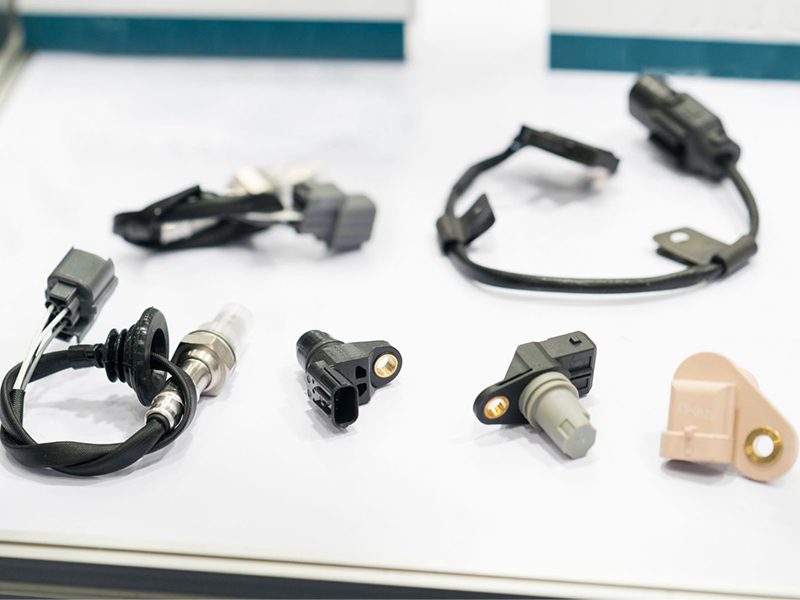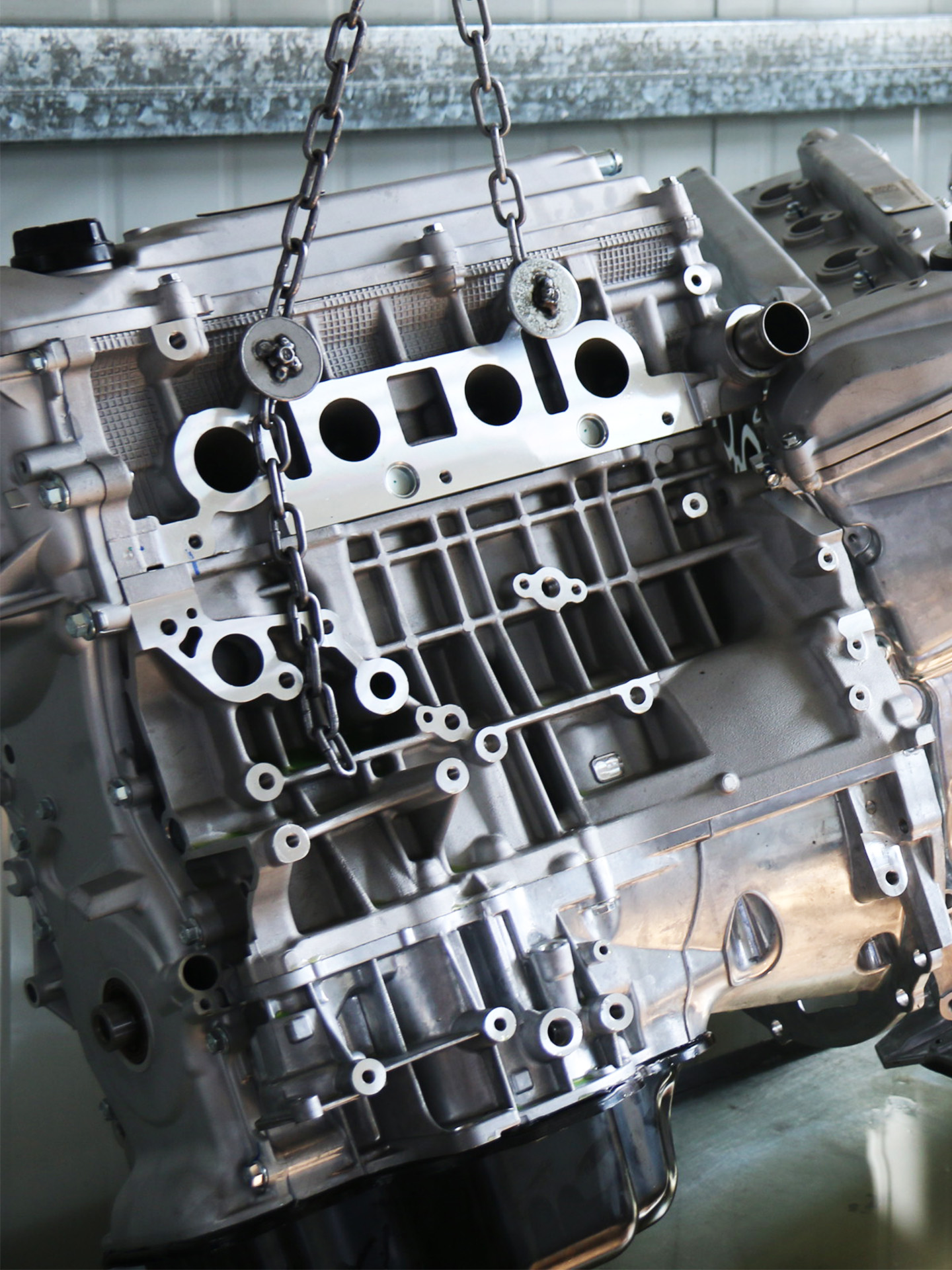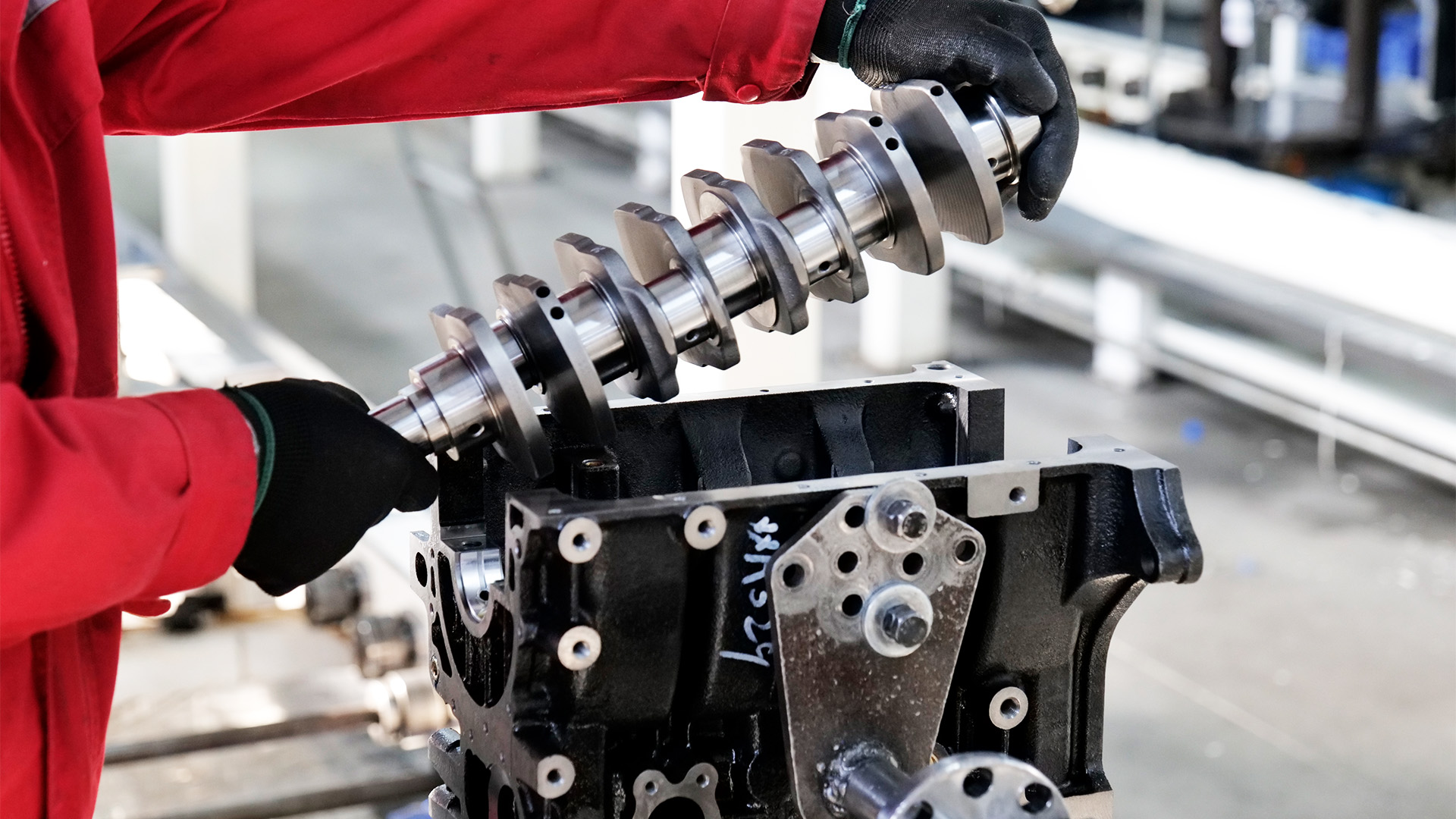Have you been faced with camshaft-related fault codes in your vehicle? Can’t tell if you need a new sensor, an ECU, or just need to set fire to the car? Well, let’s stop you right there, because today, you get a walkthrough of how to diagnose what’s actually wrong, so you don’t blow your wallet or your engine.
In this guide, you’ll get a clear view of how to test your camshaft position sensor. You don’t have to be a certified tech to get through this. Just follow along, and you’ll know where the fault lies without guessing.
So grab your tools, get that hood up, and let’s dive in.
What Is a Camshaft Position Sensor?
The camshaft position sensor is one of the most critical components in modern engines. It sends a signal to your car’s ECU to adjust the timing data that the camshaft needs for opening and closing the intake and exhaust valves and controlling ignition and fuel injection in the process. Without that info, your engine doesn’t know what’s happening inside the cylinders, which messes everything up.
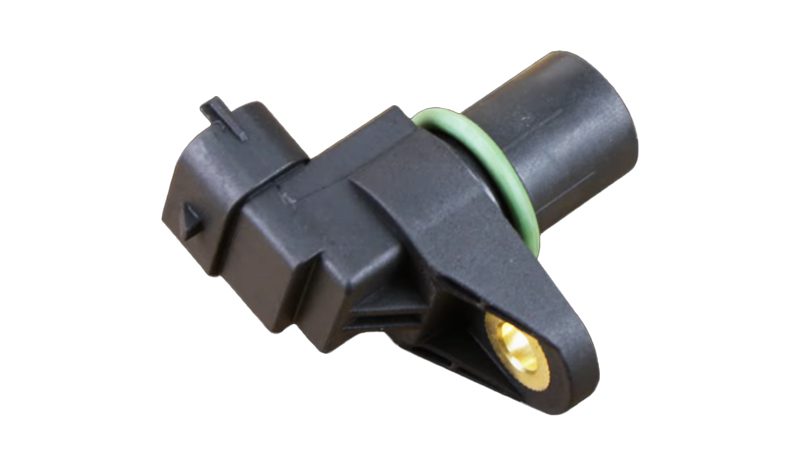
Most camshaft sensors today use Hall effect technology. It is a reluctor ring that spins close to the sensor, which generates an on-off digital signal. That signal travels to the ECU so it knows what’s going on. These sensors usually have three wires: a high supply, a ground, and a signal wire. That’s it—nothing too fancy about the hardware!
What are the Symptoms If a Camshaft Position Sensor Goes Bad?
When the camshaft position sensor is in its last leg, it shows you some pretty good indicators:
Check Engine Light Is On
If the camshaft position sensor fails, your ECU loses track of engine timing. That’s why the first symptom you’ll usually notice is the check engine light.

Fault codes like P0340, P0341, P0342, P0343, and P0344 might show up, and they’re directly related to sensor signal loss or circuit issues.
Here is the description of each code:
- P0340 – Camshaft position sensor circuit malfunction.
- P0341 – Camshaft position sensor circuit range/performance.
- P0342 – Camshaft position sensor circuit low.
- P0343 – Camshaft position sensor circuit high.
- P0344 – Camshaft position sensor circuit intermittent.
Vibrations in the Engine
A faulty camshaft position sensor throws off the engine’s timing, which can cause uneven firing. That leads to noticeable vibrations and sputtering, especially when you’re idling. You might feel like the engine is shaking or running rough for no obvious reason.
Slow Response from the Accelerator
Because the ECU relies on timing signals from the camshaft sensor, any delay or dropout in the signal messes with throttle response. When you press the gas pedal, it feels like the engine’s hesitating or lagging behind your foot.

Erratic Starting
When the sensor isn’t giving the ECU reliable data, the engine might struggle to turn over. Sometimes it’ll crank longer than usual. Other times, it might start fine, then randomly stall. It’s inconsistent, which makes it even more frustrating.
Misfiring of the Cylinder
The sensor also tells the ECU when to fire each cylinder for the crankshaft to convert piston movement to power. So when it sends bad signals to the crankshaft position sensor or none at all, misfiring becomes a common issue. This not only hurts performance but can also damage the catalytic converter if you fail to overcome the real issue.
Stalling and Backfiring
As discussed earlier, camshaft timing controls both ignition and fuel injection. If that goes out of sync, the engine can stall suddenly or even backfire. You may hear loud pops or notice the engine dying randomly while driving or at stoplights.
How Do You Test a Camshaft Position Sensor with a Voltmeter?
Every gasoline engine has crankshaft and camshaft position sensors. To rule out a faulty camshaft position sensor, you need to check if it’s receiving the correct voltage from the ECU and has a good ground connection.
You can do this with a voltimeter, especially on those motors that have dual camshaft sensors, in which one is for the intake and the other is for the exhaust. Some engines only have one sensor, depending on whether they use variable valve timing. Either way, the process stays the same.
Step 1. Turn the Ignition to the “On” Position
Get inside your car and turn the ignition key to the second position. You should see the dashboard lights turn on, but do not turn the key over to start the engine. This powers up the ECU without running the motor.

If you have a car with a push start button, press it two times without pressing the brake pedal to turn it to the ON position.
Be careful during this step. If you short anything, you can blow a fuse or even damage the engine computer.
Step 2. Locate the Sensor and Identify the Wires
The next thing to do is find the camshaft position sensor under the hood. It’s usually tucked near the top or side of the engine. But if you’re confused, check your car’s manual to verify the exact location of the camshaft sensor.
When you spot it, you’ll see it’s got a connector with three wires sticking out. One of those is the ground, one’s the power supply, which should match your battery voltage at around 12 volts, and the last one is the signal wire. That signal wire is what talks to the ECU and usually reads somewhere around 4.8 to 5 volts. To tell which one’s which, go to the next step.
Step 3. Set Up the Voltmeter
Use any basic voltmeter and set it to 20 volts DC.

If you don’t have one, a cheap unit will do the job. Now gently probe the wires at the sensor connector. Start with the outer terminals. If you’re getting -12.3 volts, your probes are backward. So, swap them.
Once you’ve got the polarity right, you’ll find:
- One wire shows around 12.3 to 12.6 volts. This is your power (battery) wire.
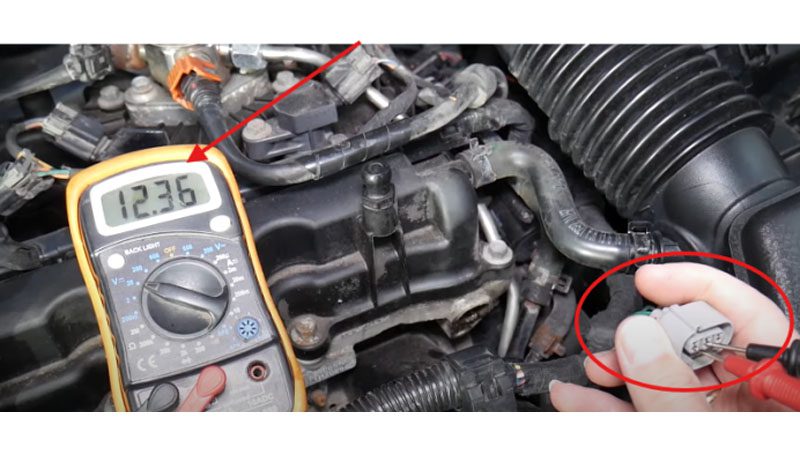
- One terminal gives no voltage. That’s your ground.

- The third terminal gives 4.8 to 5 volts. That’s your signal wire.

You now know which wire is which.
Step 4. Backprobe the Connector
Before going further, switch the ignition off again and pull the camshaft sensor out of the motor. To do this, unplug the connector attached to the sensor. Then, remove the 10mm bolt on the sensor’s retaining ring, and twist the sensor gently to pull it out.

Next, plug the connector back into the sensor.
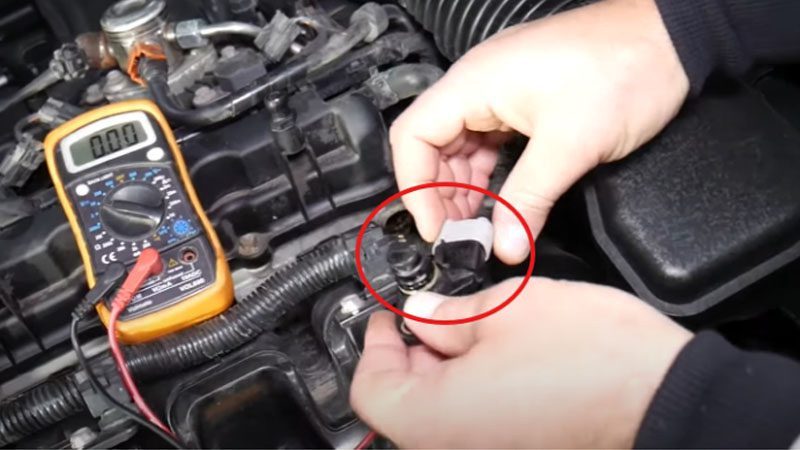
Then, push your voltmeter probes into the back side of the connector where the ground and signal wires enter the sensor. Keep the sensor unplugged. Next, check the signal wire that you just figured out in the previous step.
If the setup is correct, you should again see around 4.8 to 5 volts on your multimeter for the signal wire.

Step 5. Trigger the Sensor Using Metal
Next, hold a metal object like a socket near the tip of the camshaft sensor. If the sensor is working, the voltage will drop instantly from 4.8 volts to almost 0 volts.

Now, move the metal and it should jump back to 4.8.

Repeat it a few times:
- Metal close = 0 volts
- Metal away = 4.8 volts
This back-and-forth confirms that the sensor is detecting proximity and sending a signal. It basically acts as a digital on/off switch that tells the ECU when the camshaft hits a specific position.
Step 6. Diagnose Based on the Reading
Here’s what your results mean with the test you just conducted on your camshaft position sensor:
- If the voltage drops to zero when metal is near, and jumps back to 4.8 when removed, your sensor is working.
- If the voltage stays stuck at 4.8 volts when you move the metal closer, your sensor is bad.
- If it stays at zero the whole time, no matter whether the metal object is moved near or away, the sensor is also bad, possibly stuck.
Either way, you should see the signal switching clearly. If not, it’s time to replace the camshaft sensor.
Conclusion
If you know how to test a camshaft position sensor, you can save a lot of money and figure out the real issue yourself. If the sensor turns out to be bad, you can just buy a new one that matches your car’s model and replace it the same way you removed it. However, if the problem isn’t with the sensor, then it might be something to do with the wiring that connects to the ECU.
About Us
Ready to scale your business with reliable engine systems and aftermarket parts? Trust Nanjing Woda Auto Technology Co., Ltd., a B2B supplier with 25+ years of experience in the automotive parts industry.
We offer high-quality one-stop procurement services across engine systems, ignition systems, electrical systems, suspension systems, exhaust systems, steering systems, and more. We supply over 100,000 genuine-quality products to clients in Latin America, Europe, Africa, the Middle East, Southeast Asia, and many other regions.
Whether you need complete engine assemblies, cylinder heads, camshafts, pistons, or gasket kits, our professional sales team and reliable global shipping partners are ready to support engine rebuilders, workshops, and fleet operators at scale. Get in touch with Nanjing Woda to grow your market with confidence.


